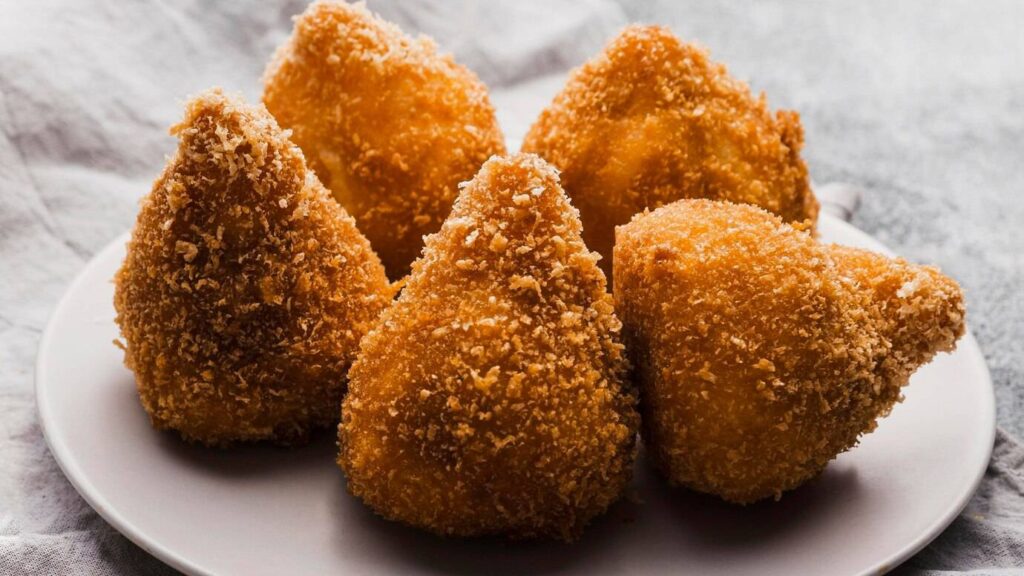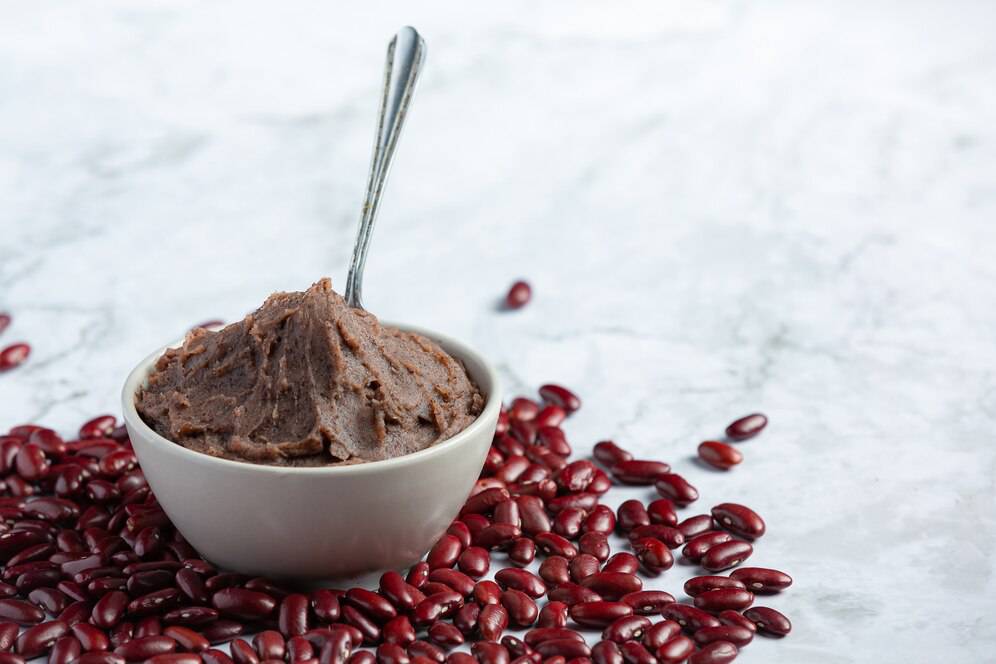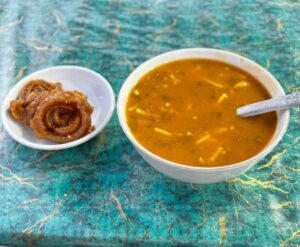The Food & Recipes Blog

Brazil’s Acarajé: Deep Fried and Delicious
Few dishes pack as much cultural, historical and culinary weight in Brazil as acarajé. When deep-fried to a golden hue, this savoury street food is no longer merely a snack — it’s a bright symbol of Afro-Brazilian food heritage and a must-try for culinary enthusiasts everywhere. Originally hailing from Bahia, especially the capital Salvador, acarajé has spread its fame beyond Brazil’s borders. But what makes it so special?
This article will delve into the history of acarajé in Brazil, its cultural importance, and the preparation process. It deserves its reputation as one of the country’s most acclaimed kinds of street food. So, whether you’re plotting a food-centric trip through South America or want to know more about world cuisine, here’s an authentic peek at the delicious story behind acarajé.
What Is Acarajé?
Acarajé is, at its most basic, a deep-fried fritter made of black-eyed peas, onions and salt. Hand-shaped and fried in dendê (palm oil), the result is a crunchy shell enclosing a soft, richly-flavoured filling. Traditionally, it is sliced open and stuffed with vatapá — a thick paste of bread, shrimp, coconut milk, ground peanuts and palm oil — along with caruru (okra stew) and spicy prawns.
A Quick Ingredient Rundown:

- Black-eyed peas – soaked, peeled, and mashed
- Onions – finely chopped for texture and sweetness
- Dendê oil – gives acarajé its distinctive orange colour and earthy aroma
- Vatapá & Caruru – traditional fillings, adding spice and complexity
- Dried or fresh shrimp – often piled generously for added protein and taste
The contrast between crispy and creamy, spicy and savoury, makes this a unique flavour experience.
The Afro-Brazilian Roots of Acarajé
From West Africa to Bahia
The story of acarajé starts not in Brazil, but in West Africa. The dish is thought to derive from a Nigerian street food called akara that enslaved Yoruba people brought to Brazil during the transatlantic slave trade. It developed in Afro-Brazilian communities, notably in Bahia, where African culture runs deep.
Today, acarajé is not only a culinary but a spiritual dish. It is closely tied to the Candomblé religion, where it is offered to the orixá (deity) Iansã. Its preparation and serving are often part of sacred rituals, handled with respect and care.
The Role of Baianas
In Salvador, acarajé is sold almost exclusively by Baianas, Afro-Brazilian women dressed in traditional white lace clothing and head wraps. These women are not just street vendors—they are cultural icons and custodians of culinary tradition. Many undergo religious training and receive blessings before serving acarajé to the public.
Why Acarajé Is Synonymous with Street Food in Brazil
A Popular Snack With Cultural Weight
When people think of street food in Brazil, they may picture sizzling churrasco skewers or sweet brigadeiros — but in Bahia, acarajé is king. Discoverable on busy street corners, beaches and festivals, it’s everyday cuisine and a treat.
What is so compelling about it is its dual role. It is a quick snack and a forceful cultural statement. Acarajé is one of the few Brazilian dishes that has preserved its original preparation methods for centuries.
Street Food With a Story
Each bite of acarajé tells a story of African resilience, female entrepreneurship, and spiritual devotion. UNESCO even recognised the knowledge and practices of making acarajé as an Intangible Cultural Heritage of Brazil, further cementing its national importance.
How Is Acarajé Made?
The Traditional Cooking Process
Making acarajé from scratch is a labour-intensive process that requires time, skill, and patience.

- Pounding and Mixing: The beans are mashed with onions and salt into a thick batter.
- Soaking and Peeling the Beans: Black-eyed peas are soaked for hours before the skins are painstakingly removed.
- Shaping by Hand: Small balls or patties are shaped using the palm.
- Frying in Dendê: The mixture is deep-fried in palm oil until golden-brown and crisp.
Modern Adaptations
While traditional acarajé is deeply respected, modern versions may include vegetarian or vegan alternatives. Some vendors use vegetable oils instead of dendê for a lighter flavour, although purists argue this diminishes the dish’s authenticity.
Nutritional Profile: Tasty Yet Heavy
Acarajé is undeniably delicious but rich in fats and calories due to its frying process and palm oil content. A single serving can contain over 500 calories. However, it’s also a source of protein and fibre, especially when paired with shrimp and vegetables.
If you’re trying it for the first time, consider sharing it with a friend or savouring it slowly to appreciate its complex flavours.
Acarajé in Popular Culture and Media
The cultural weight of acarajé has not gone unnoticed by artists, filmmakers, and writers. It has appeared in Brazilian soap operas (novelas), music, and academic research. Films about Afro-Brazilian identity often feature Baianas and their acarajé stalls as symbols of resilience and tradition.
In 2020, the Salvador city council took steps to protect Baianas’ rights further, recognising their cultural and economic contributions to local tourism.
Where to Try Acarajé in Brazil
Salvador: The Capital of Acarajé
If you’re looking for the real deal, Salvador, Bahia, is the best place to start. Here are a few iconic spots:
- Dinha do Acarajé (Rio Vermelho) – Often rated among the top acarajé vendors in the city.
- Cira do Acarajé – Another local favourite, famous for its spicy fillings and generous portions.
- Farol da Barra Beach – You’ll find numerous Baianas selling acarajé with stunning seaside views.
Other Places in Brazil
While Salvador is acarajé’s spiritual home, it can also be found in major cities like São Paulo and Rio de Janeiro, especially in Afro-Brazilian cultural centres and during festivals.
Bringing Acarajé to a Global Audience
Recently, acarajé has begun appearing in international food festivals and even on menus in Brazilian restaurants abroad. Chefs are introducing this Afro-Brazilian food to global palates, adapting the dish slightly for local tastes while preserving its cultural essence.
This growing interest is a testament to acarajé’s ability to connect cultures, tell stories, and delight taste buds.
Acarajé—More Than Just a Snack
Acarajé is more than food—it’s a historical artefact, a spiritual offering, and a symbol of cultural pride. The history of these dishes, whether eaten in Salvador or reproduced in one’s own kitchen, is one woven together by cross-continental migration and generations.
With deep roots in Afro-Brazilian food traditions, it’s status as popular street food in Brazil and its simply delicious flavours, it is one of the most memorable dishes on the planet. Next time you think of Brazil’s culinary wonders, let acarajé take centre stage on your plate.
Hungry to Discover More?
If you’re fascinated by global street food and the stories they tell, follow our blog for more deep dives into traditional cuisines worldwide. Share your thoughts or experiences with acarajé in the comments—we’d love to hear from you!









